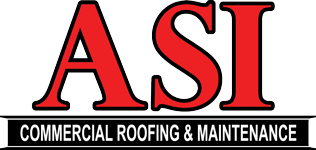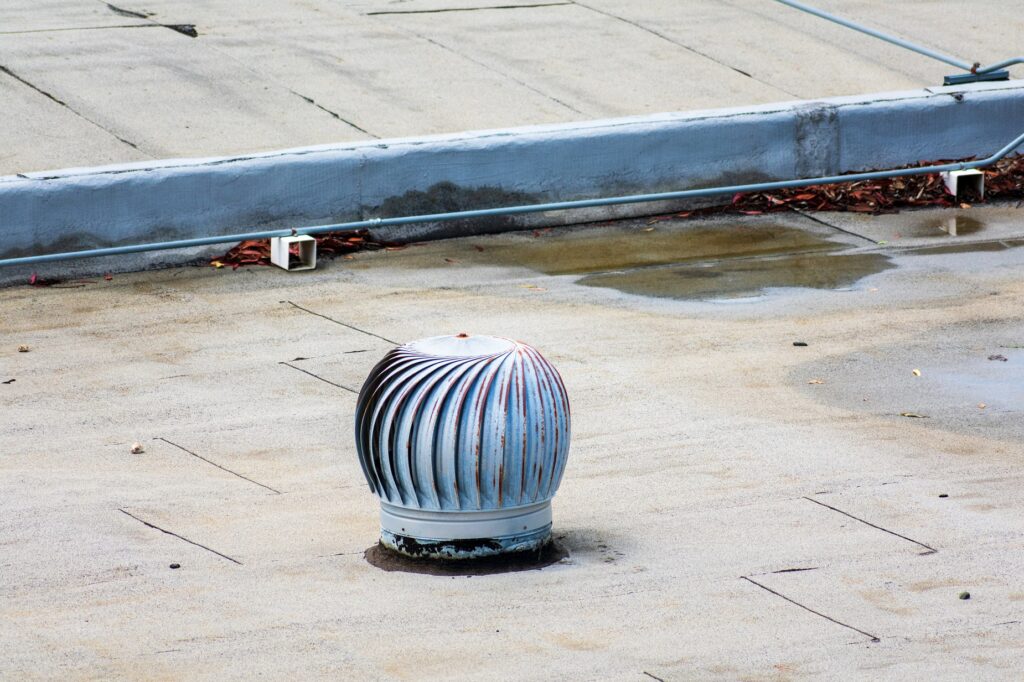Depending on the type of commercial roof you’ve installed, you can expect your investment to last anywhere from 10 to 40 years. For many property owners, that sounds like plenty of time to focus on other management concerns. That is until an emergency arises.
It’s worth noting that the life expectancy listed in your roofing literature can vary wildly based on several factors:
- The roof’s care and keeping
- Its use and abuse
- The installation and design quality
- The weather
And while you can’t control all elements, staying on the lookout for minor issues can help you address them before they become expensive repairs.
If you don’t have an ASI-installed roof and you haven’t checked your property’s roof recently, here are eight of the most common commercial roofing problems to look for:
1. Substandard Installation
Many roofing issues happen from day one due to poor installation. Commercial roofing services often differ from residential alternatives, which is why it’s important to work with a roofing company that has experience with commercial properties. Otherwise, a poor installation could increase the likelihood of future issues and decrease the lifespan of your roofing system.
It’s also a good idea to make sure that the specialist you’ve hired is working with the right high-quality roofing materials on the front end, rather than lower-quality options that may require you to get a repair or a total roof replacement in the future.
2. Pooling Water
Many commercial roofs have a slight slope, and some are even completely flat. As a result, the roofing installation process should take into consideration the need for adequate drainage. Otherwise, these commercial roofs may be prone to clogged drains and standing water.
3. Leaks
Whether they’re the result of pooling water or another type of roof damage, leaks are a major hassle for commercial property owners throughout the U.S. No matter how small the water intrusion appears, it’s crucial to take care of it sooner than later so further damage isn’t caused to the building’s structure.
4. Blow-offs and Tenting
Certain types of commercial roofs—especially single-ply structures—are at risk of tenting or blowing off. If the roof material does not adhere to the substrate, the wind may cause the roof to billow or blow off. This happens because the moving wind creates suction pressure across the surface of your roof. If your roof isn’t strong enough, the wind may blow some materials off completely.
5. Surface Erosion
As we addressed in our last blog, harsh storms and winds can wreak havoc on a roof, so you can expect to see your structure undergo some wear and tear over time. From rainstorms to hail to tornadoes—in addition to the summer heat—the weather is an inescapable source of damage.
Additionally., over time, you may notice signs of weather-driven surface erosion on certain types of roofs, which can appear as cracks, discoloration, blistering, or other imperfections.
6. Punctures
Punctures occur when something—such as tree branches or debris from a storm—adds enough weight to your roof that the materials cave inward. However, it’s worth noting one common but preventative culprit: walking on the roof. Depending on the type of commercial roof you own, the added weight of a person—combined with the textures of certain types of shoe soles—can puncture your roof. If you must walk on your roof, make sure to reduce wear and tear with walkway pads.
7. Size Contraction
If you own a metal roof, you may already be aware that the material is durable and long-lasting. However, these benefits come with a significant tradeoff, as metal can expand and contract with the summer heat. As a result, you may notice that certain components of your roofcan change in size over time. This frequent expansion and contraction can cause long-term structural issues that need to be addressed to preserve the integrity of your roof.
7. Poor Maintenance
One of the most common roofing problems our team encounters on a regular basis is a preventable one: a lack of maintenance! You can perform some types of basic maintenance yourself, but it’s important to have a professional roofing contractor inspect your structure on at least an annual basis, whether or not you believe you need roof repair. An expert can check for subtle signs of material stress or building damage, allowing you to catch small issues before they snowball into massive headaches.
To make sure your commercial roof is installed right the first time—or repaired timely—partner with our team of experts. ASI Roofing is the trusted roofing company for installation, repairs, restoration, and beyond, and we’d love to help you with your next project. Contact us today to schedule your inspection!

